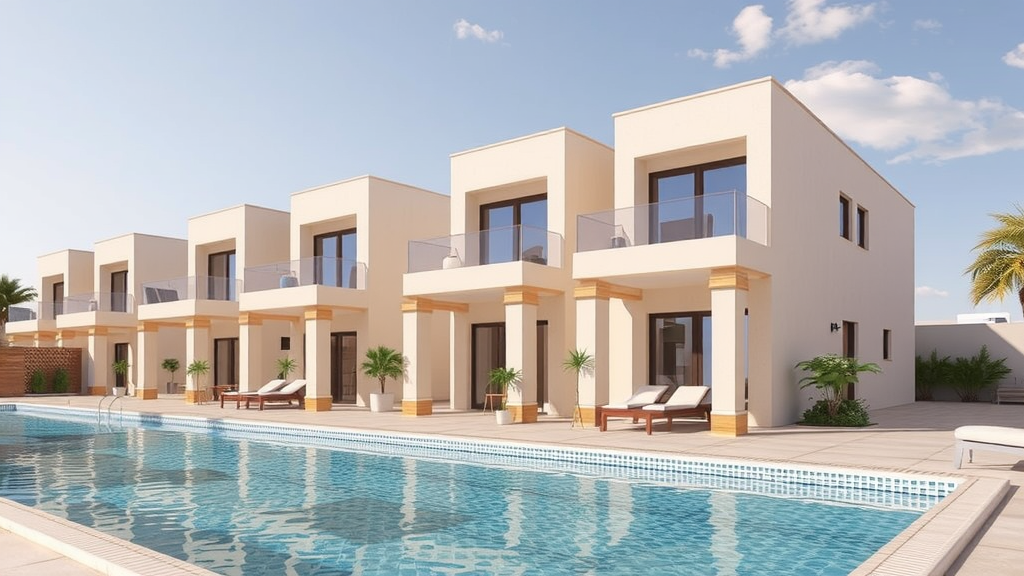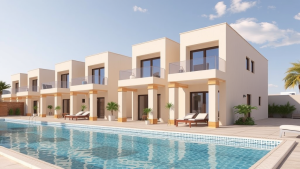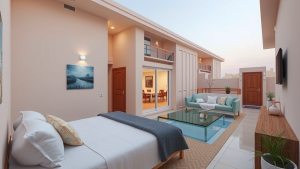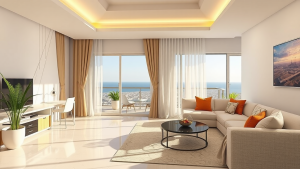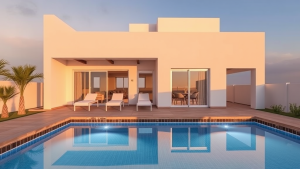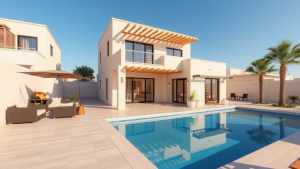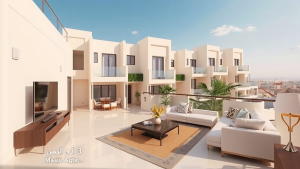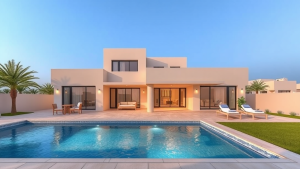Comparing public transport convenience: Hurghada’s simplicity vs. european complexity
When it comes to getting around, public transport can make or break your travel experience. In cities like Hurghada, Egypt, the public transport system is known for its simplicity, while many European cities offer a more complex network. Understanding these differences can help you navigate your travels better and make informed choices. Let’s explore how public transport convenience differs between Hurghada’s straightforward system and the intricate transport networks found in Europe.
Hurghada’s transport simplicity
Hurghada, situated along the Red Sea, is a tourist hotspot known for its lush resorts and stunning beaches. The public transport system here is designed for ease of use, which is particularly beneficial for visitors. Here are some key features:
- Minibuses: One of the most common forms of public transport in Hurghada. These minibuses run regularly along major routes, and the fares are affordable, making them an attractive option for budget travelers.
- Taxi Services: Taxis in Hurghada are readily available, and negotiating fares upfront is common. This straightforward approach minimizes confusion and makes it easy to get from point A to point B.
- Walkability: Many areas in Hurghada, especially around tourist attractions, are walkable. This allows visitors to enjoy the scenery while avoiding the hassle of navigating complex transit systems.
The sheer simplicity of Hurghada’s transport options means that even those unfamiliar with the area can find their way around easily. this ease fosters a relaxed atmosphere, allowing travelers to focus on exploring the beauty that Hurghada has to offer.
European transport complexity
In contrast, public transport in Europe can be seen as a labyrinth of choices. Each city boasts its own unique system comprised of buses, trams, trains, and subways. Here are some critical aspects to consider:
- Variety of Options: European cities often have an extensive range of transport options, including high-speed trains, local buses, and regional trams. While this means you have more choice, it can also complicate planning your route.
- Integration and Transfers: To travel efficiently in Europe, you often need to transfer between different modes of transport. This integration is beneficial but may require advanced planning and knowledge of schedules.
- Language Barriers: In many cases, public transport information is primarily available in the local language. This can create confusion for non-native speakers, especially when navigating through tickets and schedules.
The complexities of European transport systems can be daunting for newcomers. However, this intricacy often provides a deeper experience of the city’s culture and efficiency if one is willing to take the time to learn the system.
Benefits of simplicity vs. complexity
The choice between a simple and a complex transport system ultimately depends on your preferences and travel style. Opting for Hurghada’s straightforward approach allows for quick, easy navigation without the need for extensive planning. On the other hand, European complexity can enable a more thorough exploration of a city, as it opens the door to various travel routes that might lead to hidden gems.
Here are several advantages of each approach:
- Simplicity:
- Quick usage for first-time travelers.
- Easier communication with locals.
- Less time spent planning routes.
- Complexity:
- Access to a vast network covering all areas.
- Opportunity to discover different travel experiences.
- Better options for longer distances and inter-city travel.
Whether you prefer the relaxed atmosphere of Hurghada’s straightforward public transport or the diverse landscape of European options, understanding how these systems work will enhance your overall travel experience. Each choice has its unique appeals and benefits, tailored to fit different traveler needs.
In the end, your journey will be what you make of it. Embracing the local transport system, regardless of its complexity or simplicity, will only add depth to your experience as you explore vibrant cultures and stunning landscapes.
Navigating local culture through public transport: perspectives from Hurghada and european cities
Public transport serves as a vital link to local culture, providing insights into the daily lives of residents. When you think about navigating through a destination, you often consider the convenience and efficiency of available transport options. An interesting comparison arises when looking at the simplicity of public transport in Hurghada, Egypt, versus the complexity found in many European cities. Understanding these differences can enhance your travel experience and help you connect with local culture in more meaningful ways.
In Hurghada, public transport mainly revolves around microbuses and taxis, which offer a straightforward way to get around. Microbuses run on fixed routes, making it easy to hop on and off as you explore the city. They’re usually vibrant and packed with locals, creating a lively atmosphere. The cost is very affordable, often just a couple of Egyptian pounds, so you can travel without breaking the bank. When you use this form of transport, you don’t just reach your destination; you also engage with the local community, sharing space with people going about their everyday lives.
On the other hand, public transport in European cities like Paris, Berlin, or London can be a whole new world. Each city features a distinctive system, which may include buses, trams, underground trains, and even ferries. Here are some key observations about navigating public transport in Europe:
- Variety: European cities offer a wide range of transport options, catering to diverse needs. For example, you can easily switch from a tram to a metro, making it convenient to cover longer distances.
- Timing: Public transport in Europe often runs on a strict timetable. Knowing exactly when your next train or bus will arrive can require planning, giving you less spontaneity compared to the laid-back approach in Hurghada.
- Complexity: While the variety is beneficial, it can also overwhelm new visitors. Navigating an extensive map with multiple lines and frequent transfers may confuse you, especially if you’re not fluent in the local language.
- Cost: Public transport in European cities may be pricier than in Hurghada. Buying travel cards or passes can help save money, but be prepared for higher costs for single journeys.
- Local Experiences: Transport hubs in European cities often house cafes, shops, and markets, allowing you to immerse yourself in local culture even while you commute.
Despite these differences, both locations offer unique opportunities to engage with local culture. In Hurghada, as you squeeze into a microbus filled with friendly chatter, you might find yourself learning a few Arabic phrases or sharing a smile with a stranger. The atmosphere is informal, making it easier for you to strike up conversations and forge connections.
Conversely, in a bustling European train station, you might overhear the conversations of locals discussing everything from politics to sports. The environment encourages you to observe, offering a contrast to the more intimate exchanges found on a microbus in Hurghada. You may also encounter diverse cultures as people from various backgrounds travel within the same transport system. This multicultural vibe can enrich your experience, exposing you to different languages and customs.
So, how do you find the best way to navigate these transports in each location? Here are some tips:
- Plan Ahead: Familiarize yourself with the local transport system before you travel. Download apps or obtain maps to help you stay informed.
- Ask Locals: Don’t hesitate to ask locals for guidance or recommendations. They can offer valuable insights into navigating the system smoothly.
- Be Open: Approach transport as more than just a means of getting from point A to B. Embrace the opportunity to meet people and soak in the daily routine of locals.
- Stay Safe: No matter where you are, always be mindful of your belongings and personal space, particularly in crowded areas.
Whether you find yourself on a microbus in Hurghada or a subway in a European metropolis, public transport is more than just a way to travel. It’s a portal into the heart of local culture, offering you a lens through which to view the vibrant life of the area you’re visiting. So, sit back, enjoy the journey, and let public transport guide you into the daily rhythms of the local community.
Public transport serves as a vital lifeline in both Hurghada and European cities, yet the experiences of passengers can vary tremendously. Hurghada’s public transport system, characterized by its simplicity, offers a more straightforward way for travelers to connect with local culture and attractions. The unfussy buses and taxis allow you to easily traverse this vibrant seaside city, soaking in the sun and the warmth of Egyptian hospitality without the stress of complicated routes or schedules.
On the other hand, European cities present a labyrinth of options that might bewilder even seasoned travelers. While the efficiency and reliability of trains, trams, and buses offer a vast network to explore, they can also create a sense of complexity. You may find yourself consulting multiple schedules and navigating through extensive ticketing systems just to reach your destination. Yet, this complexity is not without its rewards; it allows urban explorers to delve deeper into the rich history and cultural nuances unique to each city.
Ultimately, the choice between Hurghada’s straightforward approach and Europe’s intricate network boils down to personal preference. If you seek ease and brevity, Hurghada may be the perfect fit for your travel journey. However, if you enjoy the adventure of navigating complex environments and discovering hidden gems along the way, European public transport might just be your ideal path. Each system offers its own set of advantages, allowing you to choose how you want to engage with the worlds around you. What truly matters is how you embrace the journey and the moments it brings, no matter where you choose to travel.

